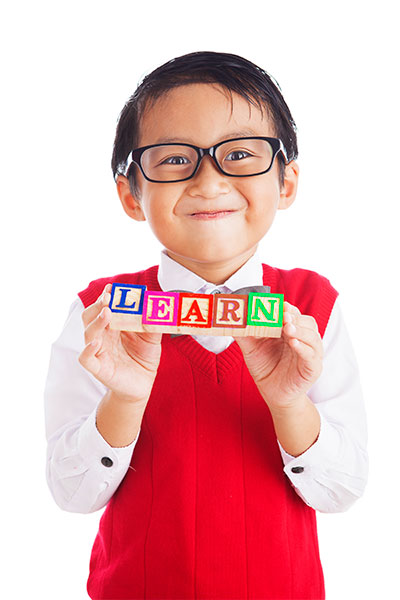When we talk about tips to foster bilingual development in children, we’re inviting your family to embark on an enriching adventure—one that sparks curiosity, deepens cultural connections, and builds lifelong cognitive skills. Imagine your child effortlessly shifting between two languages: greeting relatives in one, sharing stories with friends in another, and navigating school projects with a broader worldview. Bilingualism isn’t just an academic asset; it’s a gateway to enhanced memory, sharper problem-solving, and heightened empathy.
In this guide, you’ll discover a vibrant mix of research-backed strategies and playful activities designed to weave language learning seamlessly into everyday moments—whether it’s mealtime chatter, bedtime stories, or weekend playdates. From setting up language-rich environments to leveraging games, songs, and technology, each tip empowers you to make both languages equally visible, valuable, and fun. Ready to transform routines into powerful language-building opportunities? Let’s dive into the very best tips to foster bilingual development in children and watch your little one flourish in two worlds.
Why Bilingualism Matters?

Before diving into actionable tips, let’s consider why bilingual development deserves a place at the top of your parenting toolkit:
- Cognitive Advantages
Research shows that bilingual children often excel at attention control, problem-solving, and multitasking. Juggling two languages strengthens the brain’s executive functions, boosting memory and mental flexibility. - Academic and Career Benefits
Bilingual students typically outperform monolingual peers on standardized tests in reading, vocabulary, and math. In adulthood, bilingualism can open doors to global career opportunities and higher earning potential. - Cultural Awareness and Empathy
Learning another language immerses children in new customs, stories, and perspectives. This fosters empathy, cross-cultural understanding, and a broader worldview. - Social Connection
Whether conversing with grandparents, pen pals abroad, or future international colleagues, bilingual kids can build deeper relationships across language barriers. Enroll now in expert-run personality development classes for kids, where we blend confidence-building with bilingual fun!

Core Strategies to Foster Bilingual Development
Successful bilingual development rests on consistency, meaningful exposure, and positive reinforcement. Below are ten foundational principles—our roadmap to helping children become confident, articulate bilinguals.
1. Start Early and Stay Consistent
- The Critical Window: Children absorb languages more naturally between birth and age seven. The earlier you introduce a second language, the more native-like their pronunciation and grammar will become.
- Daily Doses: Consistency matters. Even 10–15 minutes of one language every day strengthens retention better than an hour once a week.
- Activity: Create a weekly calendar. Assign specific days or times for each language—“Mondays, Wednesdays, Fridays: Language A; Tuesdays, Thursdays, Saturdays: Language B.”
Visit: why friendship for self growth
2. Build a Rich Language Environment
- Label the World: Place sticky-note labels on household objects in both languages. “Refrigerator/Frigorífico,” “Door/Puerta”—this visual reinforcement cements vocabulary.
- Bilingual Corners: Dedicate a bookshelf or cozy nook with books, posters, and toys in each language. Rotate items regularly to keep the environment fresh.
3. Use the ‘One Person, One Language’ (OPOL) Method
- Clear Boundaries: Caregiver A speaks exclusively Language A; Caregiver B uses only Language B. This clarity helps children differentiate between the two.
- Consistency Is Key: Even when code-switching is tempting, OPOL yields stronger outcomes in early years.
- Reflective Question: Who in your child’s life could adopt the OPOL approach? A parent, grandparent, or nanny?
4. Integrate Language into Daily Routines
- Mealtime Chats: Narrate cooking steps or table manners in the target language—“Let’s wash our hands: Lávate las manos.”
- Bedtime Rituals: Alternate bedtime stories between languages, or read the same story twice (once in each language) to deepen comprehension.

5. Leverage Multimedia Resources
- Songs and Rhymes: Music enhances memory. Play language-specific children’s songs and sing along together.
- Cartoons and Apps: Choose quality, age-appropriate apps and videos in each language. Limit screen time, but leverage engaging content to reinforce vocabulary.
- Interactive Task: Create a bilingual playlist. Ask your child for song requests in both languages and enjoy a family sing-along!
6. Encourage Reading and Storytelling
- Dual-Language Books: Books with side-by-side translations help children see direct word correspondences.
- Story Creation: Prompt your child to invent and narrate their own stories in the target language. Provide story starters like “Once upon a time in a magical forest…” in both languages. Transform your child’s potential today—join our transformative personality grooming classes and see them shine in every language and every setting!

7. Promote Cultural Immersion and Experiences
- Field Trips: Visit cultural festivals, museums, or restaurants where the target language is spoken.
- Pen Pals and Playdates: Connect with families or classmates who speak the language. Real-world conversation builds confidence far more than rote practice.
8. Make Learning Playful with Games
- Language Bingo: Create bingo cards with pictures or words in each language—first to “bingo” practices vocabulary recognition.
- Scavenger Hunts: Hide objects labeled in the target language; provide riddles or clues to find them.
- Family Challenge: Plan a “Language Day” where everyone can only speak the target language during meals or a specific outing.
9. Provide Positive Reinforcement
- Celebrate Effort: Praise attempts, even when errors occur. Mistakes mean your child is stretching beyond comfort zones.
- Earn Rewards: Offer sticker charts or small tokens—e.g., after learning 20 new words, choose a favorite bilingual book or snack.
10. Collaborate with Schools and Communities
- Bilingual Programs: Investigate local schools offering immersion or dual-language tracks.
- Community Classes: Enroll your child in language classes or conversation groups to supplement home learning.
Visit: brain boosting foods for growing kids
Overcoming Common Challenges
Even with the best intentions, families encounter roadblocks. Let’s troubleshoot three frequent hurdles:
Resistance or Boredom:

Solution: Switch formats—move from books to songs, or from games to outdoor activities. Let your child pick their favorite method occasionally.
2. Inconsistent Exposure:
Solution: Enlist extended family or friends to reinforce the language. Use video calls for real-time practice if in-person isn’t possible.
3. Dominance of One Language:
Solution: Increase the minority language’s “value.” Make special occasions—like watching a favorite movie—contingent on speaking the target language.
Visit: creative thinking skills
Conclusion
Empowering your child with bilingual skills isn’t merely about adding vocabulary—it’s about enriching their mind, heart, and future opportunities. By applying these tips to foster bilingual development in children, you lay the foundation for enhanced cognitive agility, cultural empathy, and academic success. Embrace consistency, creativity, and celebration every step of the way, and watch your little one flourish in two languages.

